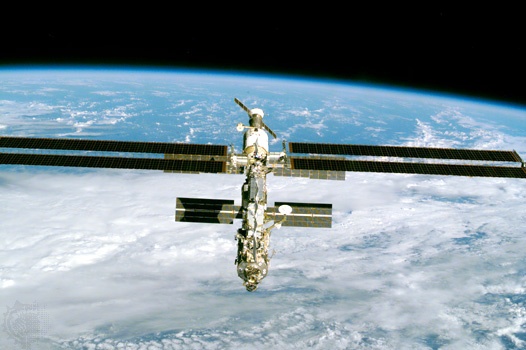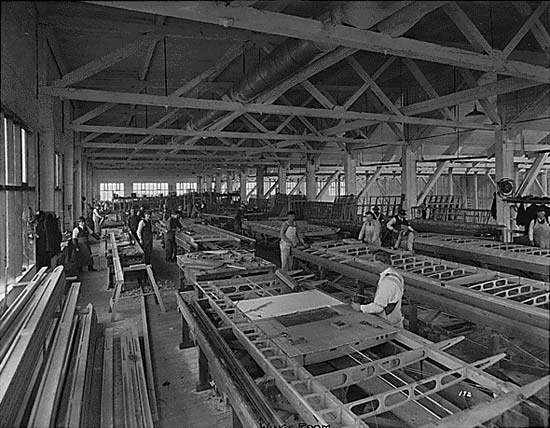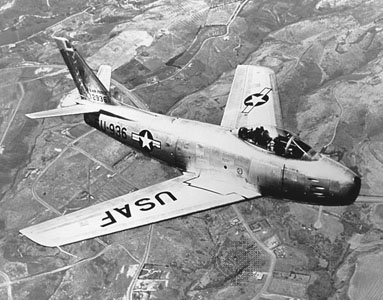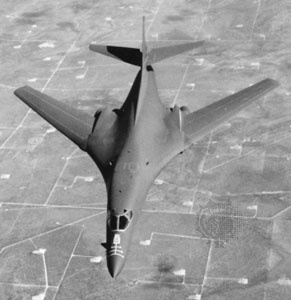Boeing Company
American company
Introduction
American aerospace company—the world's largest—that is the foremost manufacturer of commercial jet transports. It is also a leading producer of military aircraft, helicopters, space vehicles, and missiles (missile), a standing significantly enhanced with the company's acquisition of the aerospace and defense units of Rockwell International Corporation in 1996 and its merger with McDonnell Douglas Corporation in 1997. Formerly Boeing Airplane Company, the firm assumed its current name in 1961 to reflect its expansion into fields beyond aircraft manufacture. Headquarters were in Seattle until 2001, when Boeing relocated to Chicago.
Boeing Company's constituent business units are organized around three main groups of products and services—commercial airplanes, military aircraft and missiles, and space and communications. Boeing manufactures seven distinct families of commercial aircraft, which are assembled in two facilities—Renton and Everett—in Washington state and one facility in California. The Renton plant builds the narrow-body Boeing 737 and 757 aircraft, while the wide-body Boeing 747, 767, and 777 aircraft are assembled at the Everett plant. The group's Douglas Products Division in California manufactures the Boeing 717 (formerly the McDonnell Douglas MD-95) and MD-11 airliners. Boeing Business Jets, a joint venture of Boeing and General Electric Co., makes and markets a business jet based on the 737-700 airliner.
The company's military-related activities are centred on the design, manufacture, and support of fighter aircraft, bombers, transports, helicopters, and missiles. Its products include, among others, the F-15 Eagle, F/A-18 Hornet and Super Hornet, and AV-8 Harrierfighters; the C-17 Globemaster III airlifter; the AH-64 Apache series of attack helicopters; the CH-47 Chinook transport helicopter; and the AWACS (Airborne Warning and Control System) aircraft, based on the 767. Boeing contributes to the Lockheed Martin (Lockheed Martin Corporation) F-22 Raptor air-superiority stealth fighter and the Northrop Grumman (Northrop Grumman Corporation) B-2 Spirit stealth bomber. In partnership with Bell Helicopter Textron (Textron Inc.), it builds the V-22 Osprey tilt-rotor aircraft, and, with United Technologies (United Technologies Corporation)' Sikorsky division, it makes the RAH-66 Comanche armed reconnaissance helicopter. The company also builds the Harpoon antiship missile, the air-launched Standoff Land Attack Missile (SLAM), and the air-launched cruise missile (ALCM).
 In the space and communications sector, Boeing produces the Delta family of launch vehicles; the Inertial Upper Stage (IUS), an in-space solid-rocket booster; and rocket engines for Delta launchers and other vehicles. It participates in processing, ground operation, and training activities for the U.S. space shuttle fleet through United Space Alliance, a joint venture with Lockheed Martin Corporation. As the National Aeronautics and Space Administration's (NASA's) prime contractor for the International Space Station (ISS), Boeing leads an industry team comprising most major U.S. aerospace companies and hundreds of smaller suppliers and integrates the work of ISS participants from non-U.S. countries. Its involvement in commercial space development includes partnerships in the multinational Sea Launch Company and in the Teledesic consortium formed to build a satellite-based, Internet-like telecommunications service. It also makes satellites for the Navstar Global Positioning System (GPS). In 2000 Boeing employed a workforce of about 200,000 people in 60 countries and 27 U.S. states.
In the space and communications sector, Boeing produces the Delta family of launch vehicles; the Inertial Upper Stage (IUS), an in-space solid-rocket booster; and rocket engines for Delta launchers and other vehicles. It participates in processing, ground operation, and training activities for the U.S. space shuttle fleet through United Space Alliance, a joint venture with Lockheed Martin Corporation. As the National Aeronautics and Space Administration's (NASA's) prime contractor for the International Space Station (ISS), Boeing leads an industry team comprising most major U.S. aerospace companies and hundreds of smaller suppliers and integrates the work of ISS participants from non-U.S. countries. Its involvement in commercial space development includes partnerships in the multinational Sea Launch Company and in the Teledesic consortium formed to build a satellite-based, Internet-like telecommunications service. It also makes satellites for the Navstar Global Positioning System (GPS). In 2000 Boeing employed a workforce of about 200,000 people in 60 countries and 27 U.S. states.History of Boeing Company
 Boeing's origin dates to 1916 when the American timber merchant William E. Boeing founded Aero Products Company shortly after he and U.S. Navy officer Conrad Westervelt developed a single-engine, two-seat seaplane, the B&W. Renamed Boeing Airplane Company in 1917, the enterprise built “flying boats” for the Navy during World War I, and in the 1920s and '30s it successfully sold its trainers, pursuit planes, observation craft, torpedo planes, and patrol bombers to the U.S. military. In the late 1920s Boeing Airplane expanded into airmail services, and in 1928 William Boeing formed Boeing Airplane & Transport Corporation to encompass both manufacturing and airline operations. The next year the company was renamed United Aircraft and Transport Corporation and acquired several aircraft makers, among them Chance Vought, Avion (which became Northrop Aircraft), Stearman Aircraft, Sikorsky Aviation, engine manufacturer Pratt & Whitney, and aircraft and propeller maker Hamilton Metalplane. In 1931 it combined four smaller airlines under its ownership into United Airlines. In 1934, under new U.S. antitrust legislation (the Air Mail Act of 1934), aircraft manufacture was required to be divorced from air transport, and a newly incorporated Boeing Airplane Company became one of the three companies to emerge from the dissolution of United Aircraft and Transport. The other two were United Aircraft Corporation (now United Technologies Corporation) and United Airlines.
Boeing's origin dates to 1916 when the American timber merchant William E. Boeing founded Aero Products Company shortly after he and U.S. Navy officer Conrad Westervelt developed a single-engine, two-seat seaplane, the B&W. Renamed Boeing Airplane Company in 1917, the enterprise built “flying boats” for the Navy during World War I, and in the 1920s and '30s it successfully sold its trainers, pursuit planes, observation craft, torpedo planes, and patrol bombers to the U.S. military. In the late 1920s Boeing Airplane expanded into airmail services, and in 1928 William Boeing formed Boeing Airplane & Transport Corporation to encompass both manufacturing and airline operations. The next year the company was renamed United Aircraft and Transport Corporation and acquired several aircraft makers, among them Chance Vought, Avion (which became Northrop Aircraft), Stearman Aircraft, Sikorsky Aviation, engine manufacturer Pratt & Whitney, and aircraft and propeller maker Hamilton Metalplane. In 1931 it combined four smaller airlines under its ownership into United Airlines. In 1934, under new U.S. antitrust legislation (the Air Mail Act of 1934), aircraft manufacture was required to be divorced from air transport, and a newly incorporated Boeing Airplane Company became one of the three companies to emerge from the dissolution of United Aircraft and Transport. The other two were United Aircraft Corporation (now United Technologies Corporation) and United Airlines.Prior to and during World War II, Boeing Airplane Company built several famous commercial aircraft, such as the Model247 twin-engine monoplane, the Model314 flying boat (one of Pan American (Pan American World Airways, Inc.)'s Clipper-class aircraft), and the Model307 Stratoliner, the first airliner with a pressurized cabin. Boeing's legendary bombers, the B-17 Flying Fortress (first flown in 1935) and the B-29 Superfortress (1942), played key roles in the Allied war effort in World War II. In the postwar years Boeing continued its military commitments with the six-engine B-47 Stratojet (1947) and eight-engine B-52 Stratofortress (1952) jet bombers.
While Boeing was successfully selling military aircraft, its commercial products lagged behind those of rivals Douglas and Lockheed. To compete in the fierce and expanding world market after World War II, the company decided to develop an airliner, powered by turbojets, with enough range to cross the North Atlantic. After initial hesitation from airlines (most of which had committed to popular and less-expensive propeller-driven airliners from rival firms), but buttressed by sales to the U.S. Air Force in the form of an aerial tanker (the KC-135 Stratotanker), the four-engine plane, designated the 707, went into commercial service in 1958 on a Pan American transatlantic route. The aircraft quickly won over passengers with its shorter flight time and smoother ride and subsequently helped to revolutionize air travel. The 707 was followed by the 727 trijet and 737 twinjet, which entered service in 1964 and 1968, respectively. The 737 was developed into a modern family of planes, and by the end of the 20th century it had become the world's best-selling commercial aircraft. The high development costs of the 747 “Jumbo Jet,” the world's first wide-body jetliner, almost forced Boeing into bankruptcy, but, when the 400-seat aircraft went into service in 1970, it allowed airlines to offer affordable long-range air travel for the general public and gave Boeing a monopoly position in this market segment.
In 1960 Boeing purchased Vertol Corporation, then the world's largest independent manufacturer of helicopters. As Boeing Helicopters, the unit focused on tandem-rotor helicopters and was responsible for the development of the CH-47 Chinook and CH-46 Sea Knight military transport helicopters (first flown in 1961 and 1962, respectively). Boeing's work on missiles, which began in 1945, resulted in such weapons as the silo-launched Minuteman (Minuteman missile) intercontinental ballistic missile (deployed in 1962) and the AGM-86B/C air-launched cruise missile (deployed in 1982).
In the space sector during the 1960s and '70s, Boeing built the Lunar Orbiters (Lunar Orbiter), NASA's first spacecraft to orbit the Moon (1966–67), and the Mariner 10 space probe, which took the first close-up pictures of the surface of Mercury (1974–75). It also designed and built the first stage of the Saturn V rockets that sent Apollo (Apollo program) astronauts to the Moon and the battery-powered Lunar Roving Vehicles used in the Apollo 15, 16, and 17 missions. In 1976 it entered the upper-stage-rocket arena when it was selected to develop the Inertial Upper Stage (IUS), a two-stage payload delivery vehicle that can be taken into space by either a space shuttle or a launcher such as the Titan (Titan rocket). In 1993 NASA selected Boeing as the prime contractor for the ISS (International Space Station), and two years later the company became responsible for the integration and verification of ISS systems and the design, analysis, manufacture, verification, and delivery of the American components of the station.
In the 1960s and '70s Boeing also diversified into areas such as marine craft (hydrofoils), transit systems, energy production, and agriculture but later refocused on aerospace. In 1981 the company first flew its twin-engine, wide-body Boeing 767, followed by its twin-engine, single-aisle 757 the next year. By featuring a common flight deck for the two aircraft, pilots who trained and qualified on one plane could also fly the other, thus reducing cost and increasing productivity for carriers. This concept of commonality also applied to more than 40 percent of all 757-767 parts. For its next jetliner, the twin-engine, wide-body 777, Boeing involved several key airlines in the development process in order to ensure that market needs and customer preferences were satisfied. Advances in computers and computer-aided design and manufacturing (CAD/CAM) software allowed Boeing to develop the 777 entirely on computers without having to build a physical mock-up of the airplane. The first flight took place in 1994.
In 1991 the U.S. Air Force chose a design offered by a consortium comprising Lockheed (later Lockheed Martin (Lockheed Martin Corporation)), Boeing, and General Dynamics for a twin-engine advanced tactical fighter with stealth features; the aircraft was named the F-22 Raptor and was first flown in 1997. In 1996 Boeing and Lockheed Martin received U.S. defense contracts to build competitive technology demonstrators for the Joint Strike Fighter, intended as an affordable, next-generation, multirole fighter for the armed services of the United States and Britain. In 1995 Boeing joined Ukrainian, Russian, and Anglo-Norwegian partners to form Sea Launch, a commercial launch services company that sent satellites into geostationary orbit from a floating platform at an equatorial site in the Pacific Ocean. Commercial launches began in 1999. In 2000 Boeing acquired the satellite business of Hughes Electronics.
In 2003 Boeing began taking orders for the 787 Dreamliner. Scheduled to begin commercial service in 2008, the 787s are mid-range jets with speeds (Mach 0.85) that will match the fastest wide-body long-range planes but with vastly improved fuel efficiency. Roughly half of the primary structure of a 787 is made from composite materials, with the one-piece composite fuselage section especially contributing to a reduction in manufacturing costs.
Rockwell International Corporation
 The history of Rockwell International's aerospace and defense business dates to the founding in 1928 of North American Aviation, Incorporated, by the financier and corporate organizer Clement Melville Keys as an elaborate holding company, 70 percent of which was owned by Curtiss Aeroplane & Motor Corporation and the remainder by Transcontinental Air Transport (TAT), Curtiss Flying Service, and Donald Douglas (Douglas, Donald). In 1933 automobile giant General Motors (General Motors Corporation) (GM) acquired a 30 percent stake in North American Aviation through its subsidiary General Aviation Corporation, which also owned Fokker Aircraft. By early 1934 North American owned the Sperry Gyroscope Company, more than a quarter of its former parent TAT (which later would become Trans World Airlines (Trans World Airlines, Inc.)), and a majority share of Western Air Express. Because of the new U.S. antitrust legislation separating aircraft manufacturers from airlines, GM sold most of its holdings in aviation. Although North American Aviation remained partially owned by GM, it became an autonomous company. Under the leadership of the aircraft engineer James Kindelberger, who became North American's president in 1934, the company transformed itself from a holding company into a highly successful aircraft manufacturer by focusing on single-engine airplanes, and over the next three decades it built more military airplanes than any other American manufacturer. Between 1935 and 1945 North American supplied more than 42,000 military aircraft, which included the distinguished P-51 Mustang fighter and the T-6 Texan trainer (both first flown in 1940).
The history of Rockwell International's aerospace and defense business dates to the founding in 1928 of North American Aviation, Incorporated, by the financier and corporate organizer Clement Melville Keys as an elaborate holding company, 70 percent of which was owned by Curtiss Aeroplane & Motor Corporation and the remainder by Transcontinental Air Transport (TAT), Curtiss Flying Service, and Donald Douglas (Douglas, Donald). In 1933 automobile giant General Motors (General Motors Corporation) (GM) acquired a 30 percent stake in North American Aviation through its subsidiary General Aviation Corporation, which also owned Fokker Aircraft. By early 1934 North American owned the Sperry Gyroscope Company, more than a quarter of its former parent TAT (which later would become Trans World Airlines (Trans World Airlines, Inc.)), and a majority share of Western Air Express. Because of the new U.S. antitrust legislation separating aircraft manufacturers from airlines, GM sold most of its holdings in aviation. Although North American Aviation remained partially owned by GM, it became an autonomous company. Under the leadership of the aircraft engineer James Kindelberger, who became North American's president in 1934, the company transformed itself from a holding company into a highly successful aircraft manufacturer by focusing on single-engine airplanes, and over the next three decades it built more military airplanes than any other American manufacturer. Between 1935 and 1945 North American supplied more than 42,000 military aircraft, which included the distinguished P-51 Mustang fighter and the T-6 Texan trainer (both first flown in 1940).
 After World War II, North American's aircraft division developed the F-86 Sabre (first flown in 1949), the first American swept-wing jet fighter, and the F-100 Super Sabre (F-100), the first American production fighter to fly at supersonic speeds for sustained periods. GM sold its controlling share of North American to the public in 1948, after which the aircraft maker began to diversify, becoming involved in the development of rockets, guidance systems, and atomic energy. In the 1950s it built the X-15 rocket-powered research aircraft for the U.S. military and NASA in order to gather information on flight conditions beyond the atmosphere. First flown in 1959, the X-15 set separate unofficial altitude and speed records for aircraft during the 1960s—almost 108 km (67 miles) and 6.7 times the speed of sound. In 1967 North American Aviation merged with the much smaller company Rockwell Standard Corporation, a maker of automotive parts and later of aircraft, to form North American Rockwell Corporation, which was renamed Rockwell International Corporation in 1973. Rockwell International's last airplane was the supersonic, variable-wing B-1B (B-1) Lancer bomber (first flown in 1984), but it remained a major subcontractor to the commercial aerospace sector.
After World War II, North American's aircraft division developed the F-86 Sabre (first flown in 1949), the first American swept-wing jet fighter, and the F-100 Super Sabre (F-100), the first American production fighter to fly at supersonic speeds for sustained periods. GM sold its controlling share of North American to the public in 1948, after which the aircraft maker began to diversify, becoming involved in the development of rockets, guidance systems, and atomic energy. In the 1950s it built the X-15 rocket-powered research aircraft for the U.S. military and NASA in order to gather information on flight conditions beyond the atmosphere. First flown in 1959, the X-15 set separate unofficial altitude and speed records for aircraft during the 1960s—almost 108 km (67 miles) and 6.7 times the speed of sound. In 1967 North American Aviation merged with the much smaller company Rockwell Standard Corporation, a maker of automotive parts and later of aircraft, to form North American Rockwell Corporation, which was renamed Rockwell International Corporation in 1973. Rockwell International's last airplane was the supersonic, variable-wing B-1B (B-1) Lancer bomber (first flown in 1984), but it remained a major subcontractor to the commercial aerospace sector.In the 1960s and '70s the company's North American division was the key development centre for the Apollo program, including the Saturn V rocket's second stage and final assembly of the entire launcher. It also designed and built the Apollo Command and Service modules. In 1972 it began development of the space shuttle for NASA, eventually building five operational orbiters. The company's Rocketdyne division (established as part of North American Aviation in 1955) developed the rocket engines used in many U.S. space programs, including those for the three stages of the Saturn V rocket and the main engines of the shuttle orbiter.
Rockwell International sold its aerospace and defense units to Boeing in 1996 to focus on its operations in industrial automation, avionics and communications, and electronic commerce. In 2001 it announced plans to spin off its avionics business and rename itself Rockwell Automation.
McDonnell Douglas Corporation
McDonnell Douglas was formed in 1967 through the merger of Douglas Aircraft Company with McDonnell Aircraft Corporation. Douglas Aircraft originated in 1921, when the American aircraft designer Donald Douglas (Douglas, Donald) established Douglas Company as a successor to a company he had cofounded the previous year. Douglas Company built its early reputation with the World Cruiser, a single-engine biplane that, in 1924, became the first aircraft to fly around the world. The company was restructured in 1928 as Douglas Aircraft Company, and a few years later it began building its “DC” (Douglas Commercial) series of passenger planes. The twin-engine DC-3, first flown in 1935, became the model for future commercial aircraft through its unprecedented level of comfort, reliability, high speed, and, above all, low maintenance cost. Together with its military derivative, the C-47 Skytrain transport, the DC-3 became the best-selling commercial airframe in history, with a production run of 10,300. During World War II Douglas Aircraft contributed some 29,000 warplanes, one-sixth of the U.S. airborne fleet.
After the war the company continued to dominate the commercial air routes with its piston-engine DC-6 (first flown in 1946) and DC-7 (1953), whose range made possible nonstop coast-to-coast service. It also developed a number of military jets and missiles, including the A4D Skyhawk (first flown in 1954), a compact, carrier-based attack bomber; the Nike (Nike missile) series of antiaircraft and anti-ballistic-missile missiles in the 1950s and '60s; and the Thor (Thor rocket) intermediate-range ballistic missile (first launched in 1957), which later became a first-stage space launcher and gave rise to the Delta family of launch vehicles. In 1965 Douglas first flew its twin-engine DC-9 short-haul commercial jetliner, which became the company's most successful transport since the DC-3.
 McDonnell Aircraft was founded in 1939 by the American aeronautical engineer James Smith McDonnell. Although the company struggled during its first year, it soon grew rapidly as a manufacturer of airplane parts. Because of the company's research on the use of jet propulsion for aircraft, the U.S. Navy awarded it a contract to build the FH-1 Phantom, which, in 1946, became the first jet aircraft used on an aircraft carrier. With the success of its highly versatile F-4 Phantom II fighter (first flown in 1958) supplied to the U.S. Air Force and Navy, McDonnell grew quickly to became a major defense supplier. During the 1960s it built the first series of American manned spacecraft—the Mercury and Gemini space capsules.
McDonnell Aircraft was founded in 1939 by the American aeronautical engineer James Smith McDonnell. Although the company struggled during its first year, it soon grew rapidly as a manufacturer of airplane parts. Because of the company's research on the use of jet propulsion for aircraft, the U.S. Navy awarded it a contract to build the FH-1 Phantom, which, in 1946, became the first jet aircraft used on an aircraft carrier. With the success of its highly versatile F-4 Phantom II fighter (first flown in 1958) supplied to the U.S. Air Force and Navy, McDonnell grew quickly to became a major defense supplier. During the 1960s it built the first series of American manned spacecraft—the Mercury and Gemini space capsules.In the mid 1960s McDonnell sought to break into the commercial aircraft market. At the same time, despite the success of the DC-9, the overall financial condition of Douglas Aircraft was deteriorating. In 1967 McDonnell purchased Douglas and took the name McDonnell Douglas Corporation. McDonnell Douglas subsequently introduced several notable aircraft, including the DC-10 (first flown in 1970) for its commercial customers and the F-15 Eagle fighter (1972) and F/A-18 Hornet fighter (1978) for the military. In 1984 McDonnell Douglas expanded its helicopter activities by purchasing Hughes Helicopters, Inc., from the estate of the American aviation manufacturer Howard Hughes (Hughes, Howard). The loss of a contract to build a next-generation fighter prototype for the U.S. armed forces in 1996 and continued poor sales of its commercial aircraft led McDonnell Douglas to its merger with Boeing the following year.
- Shroud of Turin
- Shrove Tuesday
- shrub
- Shu
- Shuangyashan
- casual
- casual labour
- casualties, statistics on mortality in London 1647-60, from John Graunt, Natural and Political Observations, Table
- casualty insurance
- casuariiform
- Casuarinaceae
- CAT
- catabolism
- cataclastite
- catacomb
- catafalque
- Catalan language
- Catalan literature
- catalase
- catalexis and acatalexis
- catalog verse
- Catalonia
- Catalonia Museum of Art
- catalpa
- catalufa